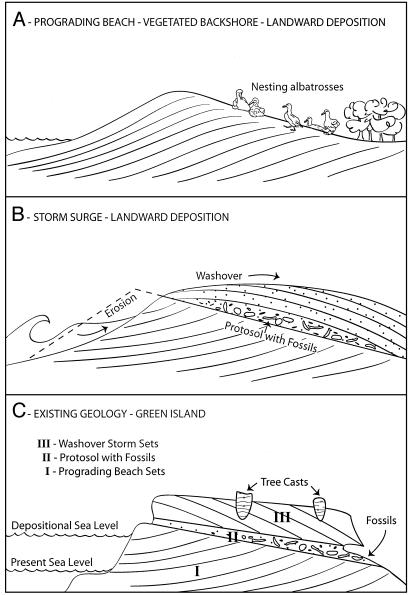Fig. 2.
Paleoenvironmental interpretation of the Short-tailed Albatross fossil site on Green Island. The geology shows three phases of deposition. (Unit I) An initial episode of shoreline progradation during a stillstand of sea level around +1 m. (Unit II) With seaward progradation, vegetation and terrigenous organisms became established and formed a weak soil called a protosol (4). It was among this nearshore vegetated environment that the albatross colony was established. (Unit III) An intense storm event from the SE that deposited several meters of beach sand in the supratidal environment of the albatross colony. Only a single wave event must have occurred because eggshells and articulated embryos are preserved.

